I was looking through the catalog at the African American manuscript auction when Spike Lee came through the door. There were so many goodies wrapped up in so much history that I had kept my head buried in the book, soaking up all that Swann Auction Galleries had uncovered about each piece.
I was nudged out of my own little world when Rebecca, who with her friend Delores had accompanied me to the auction, mentioned that the director of “Do the Right Thing” and “Malcolm X” had shown up. He was standing innocuously near a side wall, holding a white shopping bag with the company logo of his “Forty Acres and a Mule Filmworks.”
Lee was just another buyer listening and watching – or in his case, perhaps waiting. He bidded on a Tuskegee Airmen item without a paddle number, and the auctioneer obligingly waited for him to get one, after jokingly asking how they’ll be able to find him, just in case. “At a Knicks game,” Lee quipped, prompting laughter from those of us who knew that he was always on the front row at the games.
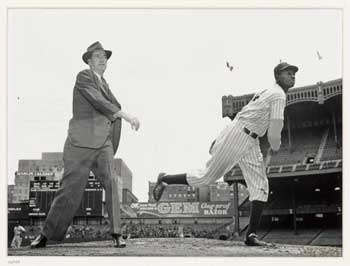
He bought a few more items, including a circa 1970s James Brown concert poster ($375) before bidding on a two-photo lot of Satchel Paige in a wind-up. “Yeah,” Lee said after nabbing the lot for $900. I understood his reaction; there’s nothing to match a Negro Leaguer. He left soon afterward. Click on photo above to see the other one in the lot.
The auction contained 534 lots of photos, books, stock certificates, prints, posters, folk art and other gems at what a Huffington Post article called the “Super Bowl of African Americana,” which one auctioneer noted. I like Swann’s manuscript auction for the African American history I gleam from it. Its staff seems to conduct a thorough search of each of the items and includes its history in the catalogs.
This New York auction was also a good place to learn what items in your family are worth keeping – business directories, old stock certificates – and to help trace your genealogical roots. The B. H. Munday Family’s Slave Bible, which recorded the births and deaths of slaves on a plantation in Essex County, Virginia, in the 1830s, could be a treasure for family historians. The Bible sold for $23,000.
A copy of a “Martha the Good Negress” comic strip like the one Rebecca had bought at a flea market sold for $375.
As usual, many of the items were purchased by reps from the National Museum of African American History and Culture at the Smithsonian. It is set to open in 2015.
Here are some other items from the auction (all photos are from the Swann website):
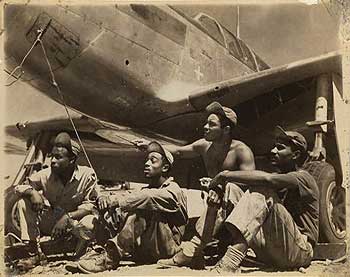
A collection of 77 photographs of Tuskegee Airmen, including their commander Col. Benjamin O. Davis Jr. They had been taken by an airman who apparently was nicknamed “Down Beat,” and had been in an old album. The photos sold for $16,000. “That lot really can fly,” the auctioneer joked, drawing moans from the audience.
I was happy to see my first real copy of the first cookbook by an African American woman named Abby Fisher. “What Mrs. Fisher Knows About Old Southern Cooking, Soups, Pickles, Preserves, etc.” was published in 1881 in San Francisco. $1,600.
The highest price went for a “contemporary oil copy” of Edward Fitzgerald’s “The Slave.” The painting is considered abolitionist art, according to the catalog, and Fitzgerald’s original is said to have been painted in the early 1830s. $60,000.
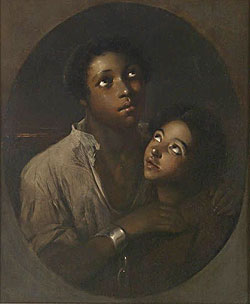
The iconic poster of Huey Newton in the fan-back wicker chair didn’t fare so well this time. Last year, a poster sold for $16,000. The one at auction yesterday – which had undergone some restoration – sold for $2,200, according to the auction house website.
Through an 1894 cargo receipt, I learned of the country’s only African American-owned railroad. The Enterprise Railroad Company had its origins in 1870 in Charleston, SC. One site noted that four of the founders were black U.S. congressmen from South Carolina (Joseph Rainey, Richard Cain, Alonzo Ransier and Robert Smalls). By 1874, the horse-drawn rail service was moving passengers and goods from throughout the city, and connecting to railroad stations and the city’s docks. Depending on who you read, it was operated by blacks until the mid-1870s or into the 1880s when it fell into white hands. $350.
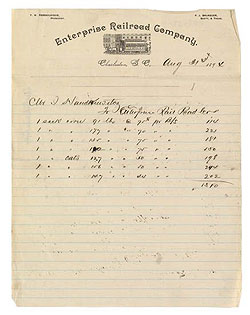
Through the photo of a young Union soldier circa 1862-1865, I was introduced to James Presley Ball, an African American photographer and daguerreotypist. He opened a studio in Cincinnati, OH, in the mid-19th century, and, according to the auction catalog, it became one of the most famous galleries in the country. African American painter Robert Scott Duncanson touched up portraits and photo prints in Presley’s studio.
An “I AM A MAN” poster from the 1968 sanitation workers’ strike in Memphis was a hit. According to the catalog, the poster was retrieved from a street on March 28, 1968, the morning after a confrontation between the workers and a mob. I’m sure these workers would never have figured that the signs would become so valuable. Many, I’m sure, just tossed them in the trash or dropped them on the ground – as in this case – once the march was over. What a mistake. $19,000.
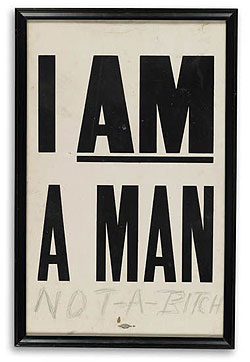
A first-edition copy of the 1895 book “Red Record” by Ida Barnett Wells on lynchings in America. Wells was an African African newspaper editor and civil rights activist who fought against this maniacal pastime of a depraved group of people. $21,000.
A collection of Pullman Porter memorabilia, including a much-used footstool, cap, towel, booklets, postcards and photos. The auctioneer noted that there was a “lot of interest” in the lot. It showed – the collection sold for $17,000.
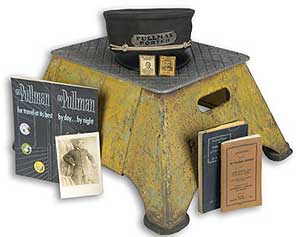
A Pittsburgh, PA, funeral home ledger with records from 1929-1934. It included 300 funerals – listing names, births, deaths, funeral services, parents, occupation and more. Another great genealogical tool. $1,300.
Langston Hughes and Roy DeCarava’s “Sweet Flypaper of Life” book. This one came up at an auction I attended about two years ago. There, it sold as part of a lot of books for $75. Here, it sold for $375.
A World War II poster of Dorie Miller, a Navy cook who showed bravery aboard his ship during the bombing of Pearl Harbor. The 1943 recruiting poster was done by David Stone Martin and printed by the U.S. government. $17,000.
